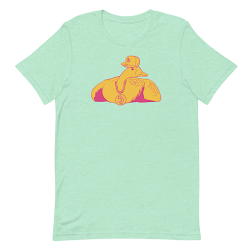March 15, 2020
San Diego Magazine recently released an article entitled "How to Help Restaurant People Survive COVID-19". I believe it contains misinformation and is irresponsible. Here is why.
I would really like to see the "over 100 pages of the latest research" San Diego Magazine writer Troy Johnson claims to have perused into the wee hours of the night in preparation for his article, How to Help Restaurant People Survive COVID-19, because he missed a few key points:
- It doesn't matter whether or not you are "someone who falls in the high-risk zone", because surely you are likely to come into contact with a high-risk person (elderly, immune deficient, preexisting illness) or someone that will be in contact with a high-risk person. It is not about whether you can overcome the disease, it is about the one domino in the line that cannot.
-"At this point, scientists have not found any evidence that coronavirus is transmitted through food" - The virus is transmitted through everything that has potentially come into contact with anyone infected with the virus and people with COVID-19 may be asymptomatic yet extremely contagious for 2-14 days. This means the cook, bartender, wait staff, busser, cashier, fellow customers, etc. may unknowingly carry the disease for two weeks before having any symptoms. These people still have to breathe at work and every exhale could further spread the virus to others via the plate, take out containers, silverware, and everything else. Sure, your piping hot soup may be disease-free, but what about the bowl, spoon, chopsticks, and, oh yea, the air circulating around you.
-"But at the ones that do it right, their kitchens are far more hygienic than your own." Sure, I believe this, but my kitchen is only touched by myself and my lady. How many people, on average, circulate through any given restaurant kitchen? How can you control this day in and day out, especially when symptoms may not be shown during an infected person's contagious period?
-"order something to-go" - See above. This doesn't change much of anything. The virus can live on paper, plastics, and anything else for hours. Someone mentioned microwaving or reheating the food, which is actually the smartest thing to do. I purchased a pizza this week and, after wiping down the box with bleach wipes, I reheated it in my toaster oven before eating it. That's the last of take-out for me for the time being.
-"Restaurants need to make their own changes—increasing sanitization, reducing commonly touched items, increasing space in their dining rooms to reach that 'six foot radius' health professionals say is a safe distance, offering easier to-go services and delivery, issuing hand sanitizer with each meal, etc." - This is my favorite part of his article, because it needs to be done if you want hyper-critical, borderline OCD patrons like myself to even consider dining out or ordering take out. I will most certainly apply a "how you do one thing is how you do everything" analysis before I commit to risking my health or anyone else's on someone's idea of cleanliness. I don't want to be handed a menu, I don't want to see hands on my plate, glass or silverware. I'd personally appreciate frequent changing of gloves and face-masks, no condiments or anything else on the table, no receipt, no card sleeves, and the ability to pay without handing over my credit card or touching anything, though I am unsure that such precautionary measures really make much of a difference when sharing airspace.
-"Bottom line is: If you're a healthy person who washes your hands and can avoid touching your face during a meal, the research suggests there's no reason to avoid restaurants that aren't over-crowded." This is not true. The virus is spread through particles from respiratory exhalation. The statement does not account for those who may be exposed to a "healthy person" who does not realize that he is carrying the virus. All it takes is one infected droplet.
Like I said above, I've been grappling with how to continue to support the local restaurant community while also keeping myself healthy and doing my part not to participate nor encourage unneeded socialization that results in further exasperating the pandemic. So far, abstaining from eating out and purchasing gift cards at your favorite establishments for future use makes the most sense. It would be nice if some of the federal government's coronavirus bail-out and stimulus dollars went to help the small businesses being negatively impacted.
Everyone is having a hard time with this and I fear it will continue to worsen with greater precautionary restrictions imposed. At this point, I understand why restaurants are staying open, as we all need to survive, but encouraging diners to continue to dine out is irresponsible. Just this morning, San Diego chef Brian Malarkey made the difficult decision to temporarily close all 10 of his Southern California eateries, although he may be of the financial means to do so while many others cannot afford to without detrimental effects on their livelihood. I predict by week's end this article will be mostly moot because restaurants will be forced to close, for dine-in at least, by local, state or federal mandate, similar to what has happened today in Ohio and Illinois.
No matter what, we should all be sympathetic to the plight of our fellow humans during this strange time of fear, confusion, misinformation and loss of income. I wish you all continued health and happiness.
NOTE: The San Diego Magazine article discussed above has been edited numerous times since this our article was published.
NOTE: The San Diego Magazine article discussed above has been edited numerous times since this our article was published.





















